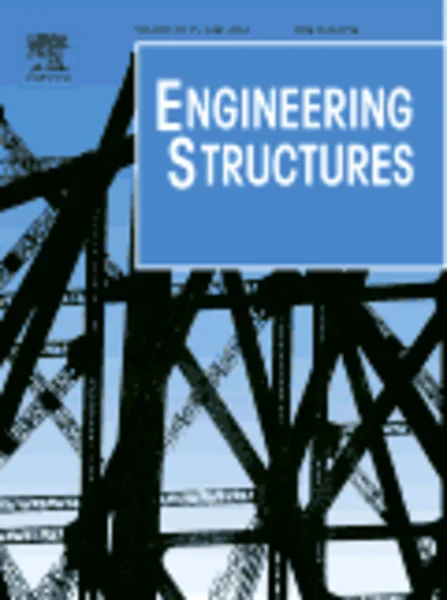-
tests and models for engineered wood product connections using small steel tube fasteners
جزئیات بیشتر مقاله- تاریخ ارائه: 1392/07/24
- تاریخ انتشار در تی پی بین: 1392/07/24
- تعداد بازدید: 870
- تعداد پرسش و پاسخ ها: 0
- شماره تماس دبیرخانه رویداد: -
laminated strand lumber (lsl) is a type of engineered wood product widely used as a substitute for sawn structural lumber. this is because lsl can be manufactured to have superior mechanical and physical performance to competing products, including high resistance to splitting, high strength and dimensional stability. the authors studied connections in lsl with behaviour of similar connections in sawn spruce lumber as a benchmark. proneness to splitting is the achilles heel of most wood-based construction materials and especially products like sawn lumber and glued-laminated-timber. this characteristic makes it especially difficult to make connections that are mechanically efficient. however, when constructing with lsl it is possible to create connections that not only have desirable response characteristics, but also achieve labour efficiencies. the particular type of connection studied by the authors uses small diameter steel tube fasteners inserted in tight-fitting holes in conjunction with steel plate elements located in slots in ends of joined members and links them together. tube fasteners are driven perpendicular to the axes of wood members and pass through both those members and steel link elements. tests were conducted under static tensile loads with multiple-fastener arrangements obeying spaced and end distance rules typical for solid bolts in sawn softwood lumber. the response was highly ductile and failure occurred mainly in the fasteners. consequently the so-called european yield model (eym) for doweled timber connections yields good predictions of connection strengths. a detailed finite element analysis was also performed to assist interpretation of test results and validate predictions from the eym beyond the range of test data. the finite element model was developed using the abaqus software and results from that model agreed closely with experimental findings in both qualitative and quantitative aspects.
مقالات جدیدترین رویدادها
-
استفاده از تحلیل اهمیت-عملکرد در ارائه الگوی مدیریت خلاقیت سازمانی و ارائه راهکار جهت بهبود
-
بررسی تاثیر ارزش وجوه نقد مازاد بر ساختار سرمایه شرکت های پذیرفته شده در بورس اوراق بهادار تهران
-
بررسی تأثیر سطح افشای ریسک بر قرارداد بدهی شرکت های پذیرفته شده در بورس اوراق بهادار تهران
-
بررسی تأثیر رتبه بندی اعتباری مبتنی بر مدل امتیاز بازار نوظهور بر نقد شوندگی سهام با تأکید بر خصوصی سازی شرکت ها
-
تأثیر آمیخته بازاریابی پوشاک ایرانی بر تصویر ذهنی مشتری پوشاک ایرانی (هاکوپیان)
-
بررسی رابطه بین درس پژوهی و توسعه حرفه ای معلمان ابتدایی
-
مقایسه سواد خواندن در دانش آموزان آسیب دیده شنوایی در سه مقطع تحصیلی
-
بکارگیری تحلیل vrio در ماتریس برنامه ریزی استراتژیک
-
improving rate allocation for ephemeral traffic using a second-order algorithm
-
preparation of carbon-supported pt catalysts covered with microporous silica layers using organosilanes: sintering resistance and superior catalytic performance for cyclohexane dehydrogenation
مقالات جدیدترین ژورنال ها
-
مدیریت و بررسی افسردگی دانش آموزان دختر مقطع متوسطه دوم در دروان کرونا در شهرستان دزفول
-
مدیریت و بررسی خرد سیاسی در اندیشه ی فردوسی در ادب ایران
-
واکاوی و مدیریت توصیفی قلمدان(جاکلیدی)ضریح در موزه آستان قدس رضوی
-
بررسی تاثیر خلاقیت، دانش و انگیزه کارکنان بر پیشنهادات نوآورانه کارکنان ( مورد مطالعه: هتل های 3 و 4 ستاره استان کرمان)
-
بررسی تاثیر کیفیت سیستم های اطلاعاتی بر تصمیم گیری موفق در شرکتهای تولیدی استان اصفهان (مورد مطالعه: مدیران شرکتهای تولیدی استان اصفهان)
-
فرجام خواهی در موضوع وقف: چالش تمییز اصل وقفیت از دیگر دعاوی
-
بررسی و مقایسه آمادگی به اعتیاد، ابعاد شخصیت و راهبردهای مقابله با استرس در دانشجویان دخترو پسر دانشگاه علوم پزشکی کرمان
-
اثربخشی آموزش مهارت های فرزندپروری مثبت بر استرس ادراک شده و شادکامی مادران کودکان بیش فعال
-
اثربخشی درمان شناختی-رفتاری بر کاهش میزان افسردگی، اضطراب و افزایش سرسختی روان شناختی معلمان شهر کرمانشاه
-
جایگاه قوم بختیاری در انقلاب مشروطه




سوال خود را در مورد این مقاله مطرح نمایید :